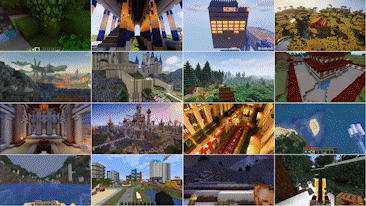 NVIDIA is helping push the limits of training AI generalist agents with a new open-sourced framework called MineDojo.
NVIDIA is helping push the limits of training AI generalist agents with a new open-sourced framework called MineDojo.
Using video games as a medium for training AI has become a popular method within the AI research community. These autonomous agents have had great success in Atari games, Starcraft, Dota, and Go. But while these advancements have been popular for AI research, the agents do not generalize beyond a very specific set of tasks, unlike humans that continuously learn from open-ended tasks.
Building an embodied agent that can attain high-level performance across a wide spectrum of tasks has been one of the greatest challenges facing the AI research community. In order to build a successful generalist agent, users need an environment that supports a multitude of tasks and goals, a large-scale database of multimodal knowledge, and a flexible and scalable agent architecture.
Enter Minecraft, the most played game in the world. With its flexible gameplay players can do a wide variety of actions. This ranges from building a medieval castle to exploring dangerous environments to gathering resources for building a Nether Portal to battle the Nether Dragon. This creative atmosphere is the perfect environment for an embodied agent to train.
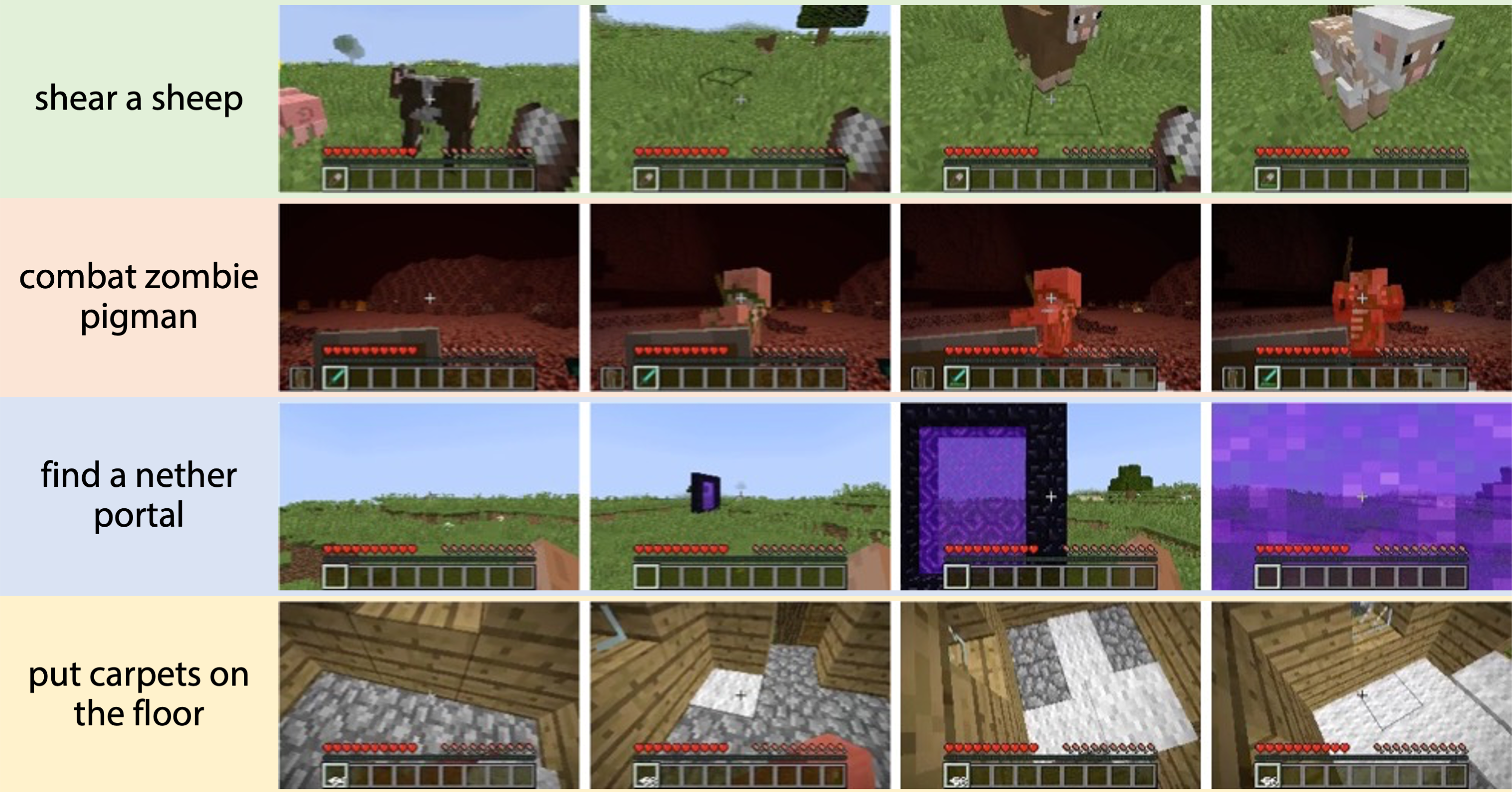
To take advantage of such an optimal training ground, NVIDIA researchers created MineDojo. MineDojo has built a massive framework that features a simulation suite with thousands of diverse open-ended tasks and an internet-scale knowledge base. Building an AI powerful enough to complete these tasks would not be possible without an expansive data library.
The mission of MineDojo is to promote research towards the goal of generally capable embodied agents. In order for the embodied agent to be successful, the environment needs to provide an almost infinite number of open-ended tasks and actions. This is done by giving the agent access to a large database of information to pull knowledge and then apply learnings. The training gained from the embodied agent needs to be scalable to convert the large-scale knowledge into actionable insights later on.

In MineDojo, the embodied agent has access to three internet-scale datasets. With 750,000 Minecraft YouTube videos—amounting to over 33 years of Minecraft videos—pulled into the database, over 2 million words were transcribed.
MineDojo also scraped over 6,000 web pages from the Minecraft Wiki, with over 2.2 million bounding boxes created for the visual elements of those pages). Also, millions of Reddit threads related to Minecraft and the variety of activities one can do within the game were captured. The questions included how to solve certain tasks and showcase achievements and creations in image and video formats, along with general tips and tricks.
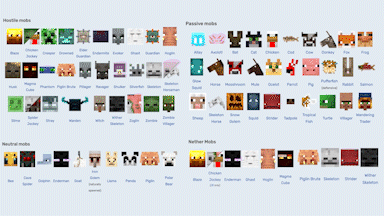
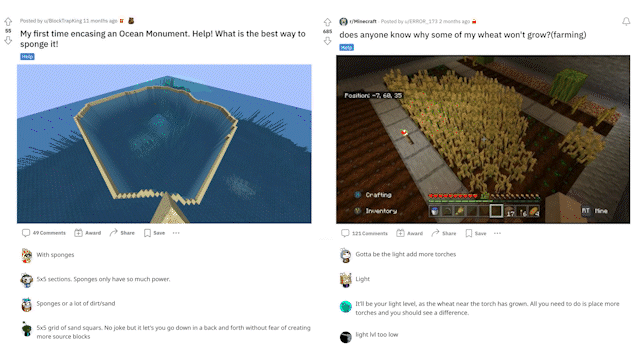
MineDojo offers a set of simulator APIs that users can use to train their AI agents. It provides unified observation and action spaces to help facilitate the agent to adapt to new scenarios and multitask. Additionally, using the APIs users can take advantage of all three worlds within the Minecraft universe to expand on the number of tasks and actions the agent can do.
Within the simulator, MIneDojo splits the benchmarking tasks into two categories: programmatic tasks and creative tasks.
Programmatic tasks are well defined and can be easily evaluated, such as “surviving 3 days” or “obtain one unit of pumpkin in the forest.”
Creative tasks are much more open-ended, such as “build a beautiful beach house.” It is very difficult to define what qualifies as a beach house by an explicit set of rules. these tasks are to encourage the research community to develop more human-like and imaginative AI agents.
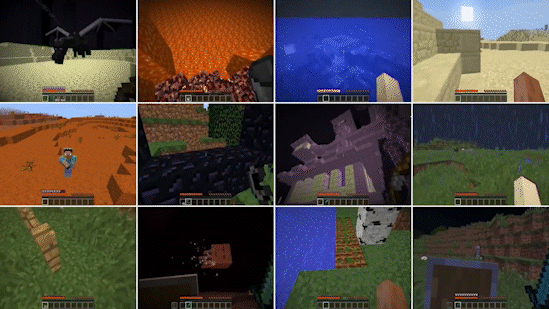
Natural language is a cornerstone of the MineDojo framework. It aids open-vocabulary understanding, provides grounding for image and video modalities, and serves as an intuitive interface to specify instructions. Combined with the latest speech recognition technology, it is possible in the near future to talk to an AI Agent as you would to a friend in multiplayer co-op mode.
For example: “plant a row of blue flowers in front of our house. Add some gold decorations to the door frame. Let’s go explore the cave next to the river,” could all be possible.
Proof of concept using MineCLIP
To help promote the project and provide a proof of concept, the MineDojo researchers have implemented a single language-prompted agent to complete several complex tasks within Minecraft, called MineCLIP. This novel agent learning algorithm takes advantage of the 33 years worth of Minecraft YouTube videos. However, it is good to point out that any agent can use any or all three sections of the Internet-scale database at the user’s discretion.

MineCLIP as an embodied agent learns from the YouTube videos the concepts and actions of Minecraft without human hand labeling. YouTubers typically narrate what they are doing as they stream the gameplay video. MineCLIP is a large Transformer model that learns to associate a video clip and its corresponding English transcripts.
This association score can be provided as a reward signal to guide a reinforcement learning agent towards completing the task. For the example task, “shear a sheep to obtain wool,” MineCLIP gives a high reward to the agent if it approaches the sheep, but a low reward if the agent wanders aimlessly. It is even capable of multitasking within the game to complete a wide range of simple tasks.
Building generally capable embodied agents is a holy grail goal of AI research. MineDojo provides a benchmark of 1000s of tasks, an internet-scale rich knowledge base, and an innovative algorithm as a first step towards solving the grand challenge.
Stay posted to see what new models and techniques the research community comes up with next! Start using MineDojo today.
Read more about the framework and its findings. Explore other NVIDIA research.
